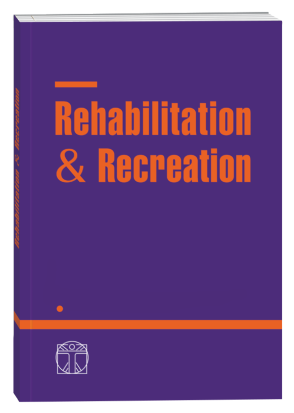THE USE OF ELEMENTS OF NATIONAL MARTIAL ARTS IN SPECIAL PHYSICAL TRAINING OF MIXED MARTIAL ARTS FIGHTERS
DOI:
https://doi.org/10.32782/2522-1795.2023.17.27Keywords:
special physical training, national martial arts, mixed martial arts, MMA.Abstract
Purpose is to determine the influence of the use of elements of national martial arts in the process of special physical training on the results of physical fitness of mixed martial arts (MMA) athletes. The study involved 30 MMA athletes of a basic level of fitness aged 13–14 years. Testing was carried out before the start of the experiment on six indicators, namely: bending the torso forward from a sitting position, long jump from a place, jump up from a place, shuttle run (4x9 meters), straight kick with the right (left) leg, side kick with the right (left) leg. The participants were divided into three groups. Group No. 1 trained using elements of national martial arts (squats), No. 2 – with plyometric exercises (depth jumps) and No. 3 – using weights (squats with a barbell). Note that the duration of training in the three groups did not differ. There were also no differences in the intensity and volume of loads. Training was carried out three times a week for two months. After completion of the eight-week training cycle, retesting was conducted. As a result of testing before and after the experiment, an improvement in results in all indicators is obvious. At the same time, analysis of the data of the three groups indicates a significant difference in the indicators in group No. 1 in a direct strike with the right and left leg – 22.82% and 20.89%, respectively, group No. 2 showed an increase of 13.9% (right leg) and 11.46% (left leg), and in the third group the smallest increase was recorded, which was only 3.73% and 3.41%, respectively. A similar difference in gain was also observed in the right and left leg side kick test. There is a similar significant difference in high jumps. In the agility test (shuttle run 4x9 meters), no significant difference in the dynamics of indicators was revealed. The flexibility test (torso bending forward from a sitting position) showed a slight difference between the indicators of groups 1 and 2. Consequently, the introduction of elements of national martial arts (squats) as a type of plyometric exercise into the special physical training of MMA fighters may have some advantages over jumps in depth and work with weights.
References
Алексєєв А. Ф., Кулик Р. Л., Красильников В. В. Особливості розвитку силових можливостей єдиноборців в групах базової підготовки. Єдиноборства. 2017. № 4. С. 4–6.
Косинський Е. О. Методологічні особливості використання елементу «присядка». Науковий часопис Національного педагогічного університету імені М. П. Драгоманова. Серія 15. Науково-педагогічні проблеми фізичної культури (фізична культура і спорт). 2023. № 3. С. 94–98.
Кравцова Г. Л., Коростиленко Є. П.. Особливості розвитку вибухової сили в дітей 11–13 років, які спеціалізуються у кікбоксингу. 2019. Вип. 12. URL: http://visnyk-sport. kpnu.edu.ua/article/view/178611/178648. (дата звернення: 20.09.2023)
Огарь Г. О., Ольховський М. А. Динаміка спеціальної фізичної підготовленості кваліфікованих бійців змішаних єдиноборств протягом підготовчого періоду макроциклу при виконанні ударної техніки. Єдиноборства. 2021. № 4 (22). С. 39–49. DOI:10.15391/
ed.2021-4.04.
Bounty Paul La, Campbell Bill, Galvan Elfego, Cooke Matthew, Antonio Jose. Strength and Conditioning Considerations for Mixed Martial Arts. Strength and Conditioning Journal. 2011. 33(1). Р. 56–67. DOI: 10.1519/SSC.0b013e3182044304.
Lenetsky Seth, Harris Nigel. The Mixed Martial Arts Athlete: A Physiological Profile. Strength and Conditioning Journal. 2012. № 34 (1). Р. 32–47. DOI: 10.1519/SSC.0b013e3182389f00.
Paul La Bounty, Bill Campbell, Elfego Galvan, Matthew Cooke, Jose Antonio. Strength and Conditioning Considerations for Mixed Martial Arts. Strength and Conditioning Journal. 2011. № 33 (1). Р. 56–67. DOI: 10.1519/SSC.0b013e3182044304.
Tácito P. Souza-Junior, Bernardo N. Ide, Jeffer E. Sasaki, Rafael F. Lima, Cesar C. C. Abad, Richard D. Leite, Marcelo P. Barros, Allan C. Utter. Mixed Martial Arts: History, Physiology and Training Aspects. The Open Sports Science Journal. 2015. № 8. Р. 1–7. URL: https://www.researchgate.net/publication/281628101_Mixed_Martial_Arts_History_Physiology_and_ Training_Aspects. (дата звернення: 16.09.2023)
Downloads
Published
How to Cite
Issue
Section
License

This work is licensed under a Creative Commons Attribution-NonCommercial-NoDerivatives 4.0 International License.












